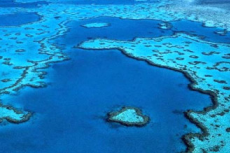
Email: ZYVC057@live.rhul.ac.uk
Total Article : 213
About Me:I'm a graduate student studying International Criminal Law and first started writing for King's News almost 4 years ago! My hobbies include reading, travelling and charity work. I cover many categories but my favourite articles to write are about mysteries of the ancient world, interesting places to visit, the Italian language and animals!

Coral reefs are known to be some of the most beautiful, dynamic ecosystems on Earth and shelter around 25% of all marine life! Corals are vibrant communities in which you can find a multitude of animals including sea slugs, clams, crabs, sponges, sea worms, shrimp, starfish, jellyfish and sea urchins along with types of fungi, sea turtles and fish. I admit, before writing this article my knowledge on coral reefs was somewhat limited to the coral reefs in Finding Memo but since then I have come to admire the fascinating, lively daily life of coral reefs.
Corals are marine invertebrates made up of tiny polyps. Each individual polyp stays in one place and makes up the skeleton of the reef. Polyps have a hard outer layer made of calcium (kind of like the shell of a snail) and the polyps are linked together by tissue. These polyps have rings of tentacles which have tips that sting; they are great for defending the coral or for seizing zooplankton (tiny living organisms) as food.
Oceans have fostered coral reef for millions of years yet coral covers less than 0.1% of the oceans’ floor. Coral reefs develop at an extremely slow pace and grow from 0.3 to 10cm each year. Hence, the beautiful, flourishing reefs we see today probably took the past 5,000 to 10,000 to make! You can find coral in warm, clear water that is shallow (typically up to 60metres/200ft deep). Some corals, however, can live in deeper, colder water, for example the genus Lophelia can survive in water that is 3,000 metres (9,800 ft) deep. Corals can also be found by the US coast in Washington State and by the Aleutian Islands in Alaska.

The largest coral reef in the world is the Great Barrier. It consists in over 2900 individual reefs and 900 islands as it covers over 2600 kilometres off the northeast Australian coast. The Great Barrier is so large it can be seen from space and it also the largest structure made of living organisms in the world! The Great Barrier Reef Marine Park sets out to protect the reef by reducing the human impact of fishing by the reef. In 1981 the Great Barrie was named a World Heritage Site and is an incredibly popular destination for tourists.
Apart from being pretty awesome, coral reefs are also extremely important. In fact coral reefs help protect shorelines from big waves as they can absorb the energy of waves. Coral reefs also help the reproduction of fish as they are a safe place for fish to spawn (place their eggs into the water) and are home to a multitude of organisms. Reefs are great for us humans as they provide food for people who live along the coastlines and many anti-cancer drugs and painkillers derive from reefs. Lastly, coral reefs play a central part in the carbon cycle and are also good indicators that the water is of good quality as healthy reefs equate healthy water. Unfortunately, coral reefs are sensitive ecosystems and are endangered by human pollution which is why each of us can play a part in saving the reefs by supporting groups and organisations which protect them.
Image 1: http://www.noaa.gov/features/economic_0708/images/coralreef.jpg
Image 2 (The Great Barrier): http://www.greatbarrierreef.org/images/greatbarrierreef_01.jpg

0 Comment:
Be the first one to comment on this article.